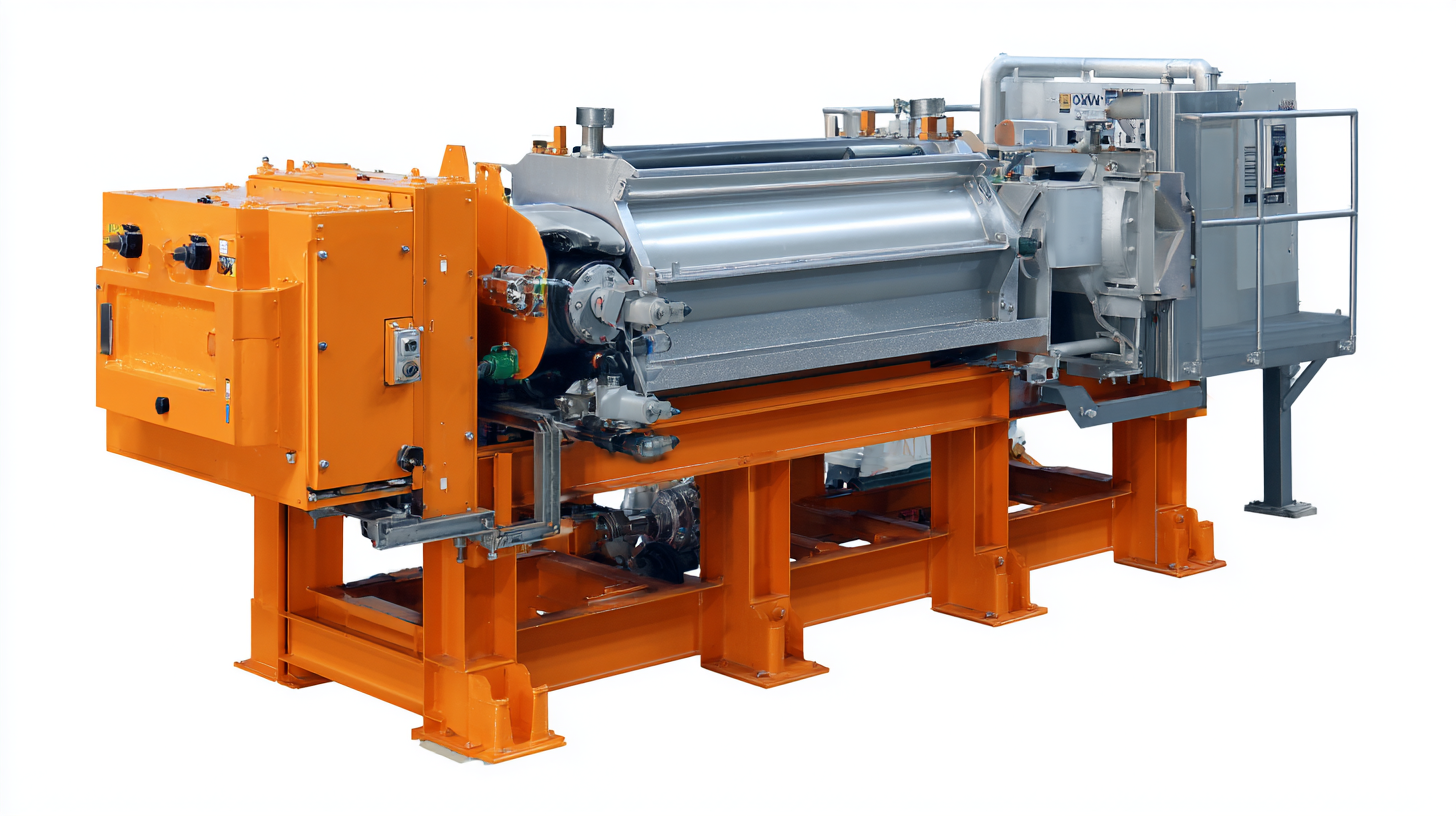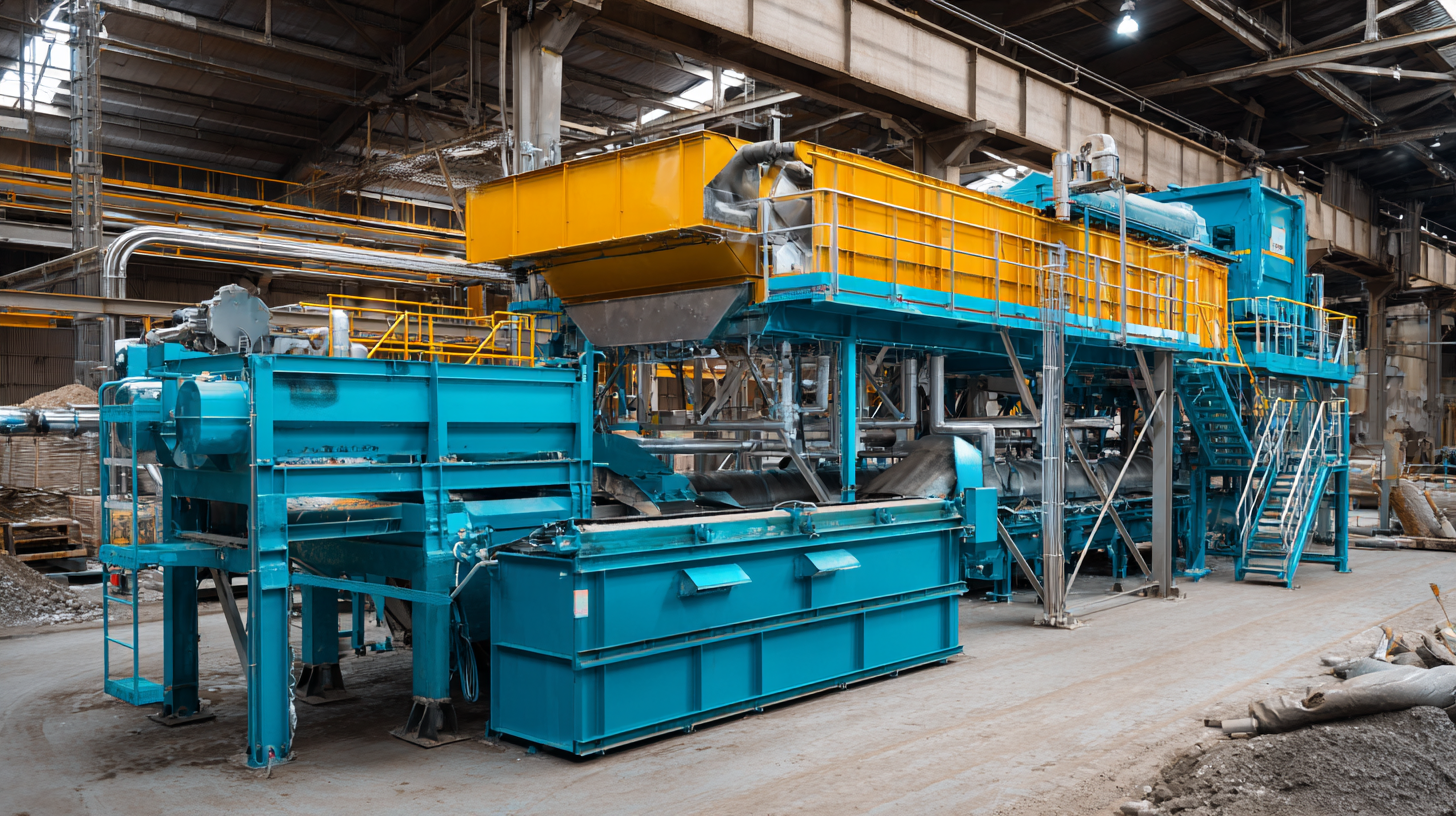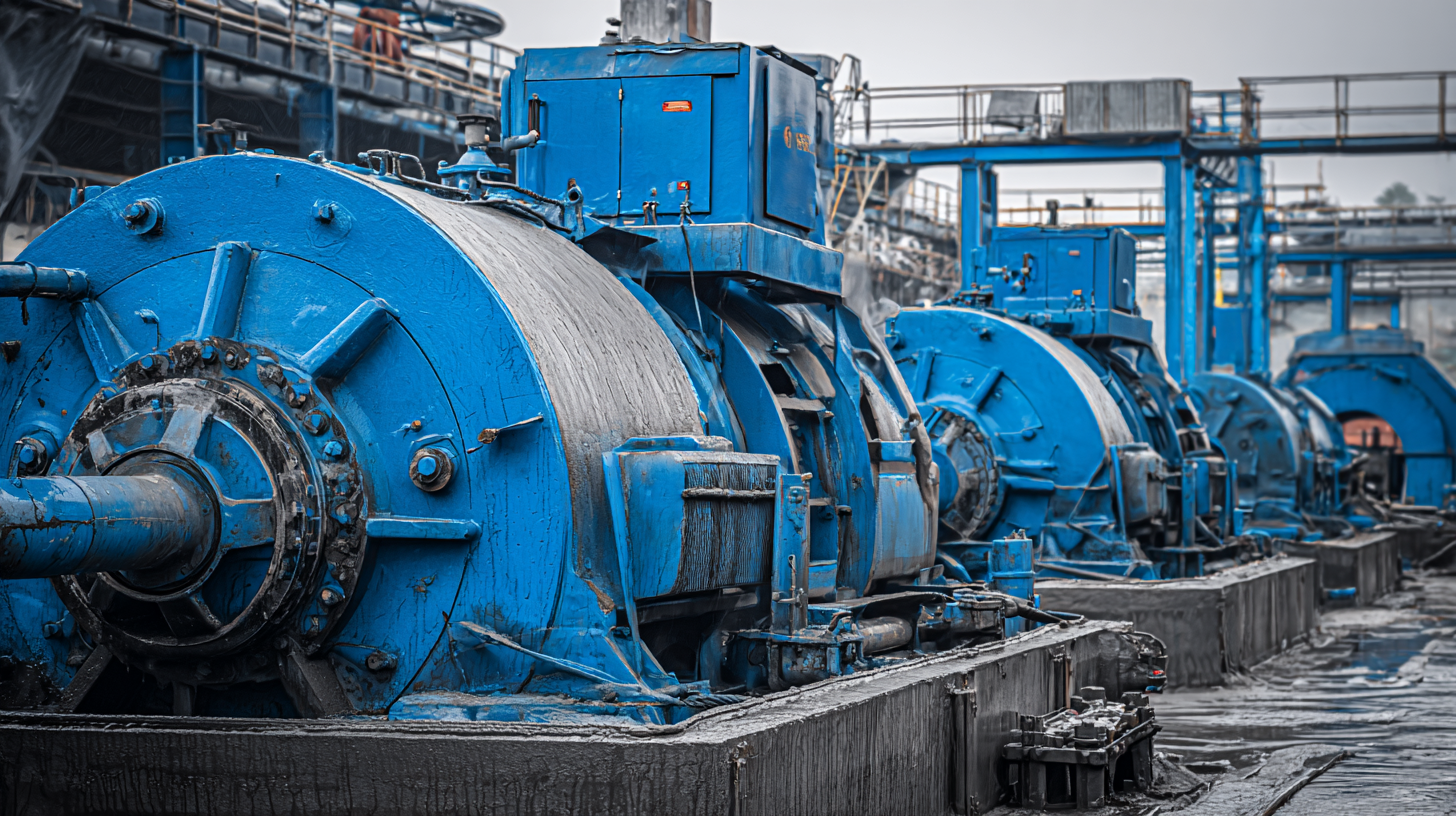 +86 13600513715
+86 13600513715



As industrial sectors strive for enhanced operational efficiency and environmental compliance, Mechanical Sludge Dewatering has emerged as a critical process in wastewater management and treatment. According to a recent report by the Global Water Intelligence, the global market for sludge treatment is projected to reach $12.06 billion by 2025, driven by increasing regulatory pressures and the need for sustainable practices.

The implementation of effective dewatering solutions not only reduces the volume of sludge but also mitigates disposal costs, addressing both economic and environmental concerns. In China, where manufacturing capabilities are evolving rapidly, top-tier companies are leading the way in developing innovative dewatering technologies. By focusing on best practices and reliable solutions, these manufacturers are positioned to meet the growing demand for efficient Mechanical Sludge Dewatering, ensuring that industries across various sectors can achieve their sustainability goals.
 The mechanical sludge dewatering industry in China has witnessed significant advancements in
technology and efficiency, making it a frontrunner for global solutions. As the demand for sustainable waste management rises, manufacturers
are adopting innovative techniques that ensure optimal water extraction while minimizing energy consumption. The shift towards
automation and smart technologies is a driving force in these developments, allowing for real-time monitoring and improved
operational efficiency.
The mechanical sludge dewatering industry in China has witnessed significant advancements in
technology and efficiency, making it a frontrunner for global solutions. As the demand for sustainable waste management rises, manufacturers
are adopting innovative techniques that ensure optimal water extraction while minimizing energy consumption. The shift towards
automation and smart technologies is a driving force in these developments, allowing for real-time monitoring and improved
operational efficiency.
When considering a mechanical sludge dewatering solution, prioritize equipment that offers
energy-efficient features. This not only reduces operational costs
but also supports environmental sustainability. Additionally, look for manufacturers that provide robust after-sales support to
ensure smooth maintenance and troubleshooting.
Another emerging trend is the integration of
eco-friendly materials in manufacturing processes. By choosing products
made from sustainable resources, companies can enhance their commitment to green practices. Keep an eye on advancements in
sludge treatment technologies, as these innovations often translate into better performance and compliance with regulatory
standards, further solidifying your operations in an eco-conscious market.
As the manufacturing landscape evolves, understanding the intricacies of import-export certifications in the Chinese manufacturing sector becomes crucial. In 2023, updates to China's catalogues governing goods and technologies subject to licensing are set to enhance trade confidence. This shift is pivotal for businesses looking to navigate the complexities of international trade, especially in sectors heavily regulated by export controls.
When engaging in international trade, it’s essential to ensure that all necessary certifications and documentation are in place. **Tips**: Always verify the required import-export licenses specific to your products, as compliance can significantly affect trade operations. Additionally, stay informed about any changes in regulations that may impact your goods, as these updates can alter trade dynamics.
The rising concerns about sustainability and green trade barriers are also noteworthy. As countries push towards greener economies, different regulations may emerge, impacting the flow of certain goods. **Tips**: Research your target market’s green certifications and requirements to avoid potential tariffs or trade barriers. Establishing a strong understanding of these regulations will bolster your position in a competitive global market.
| Certification Type | Description | Relevance for Mechanical Sludge Dewatering | Year Introduced |
|---|---|---|---|
| ISO 9001 | Quality Management System Certification | Ensures consistency in product quality, vital for machinery. | 1987 |
| CE Marking | European Conformity Mark | Indicates compliance with EU safety, health, and environmental requirements. | 1985 |
| ASME Certification | American Society of Mechanical Engineers Certification | Ensures adherence to high manufacturing standards for mechanical components. | 1880 |
| ISO 14001 | Environmental Management Systems Certification | Demonstrates commitment to reducing environmental impact of manufacturing. | 1996 |
| OHSAS 18001 | Occupational Health and Safety Assessment Series Certification | Ensures safety measures are in place within manufacturing facilities. | 1999 |
| API Spec Q1 | American Petroleum Institute Specification Q1 Certification | Important for manufacturers serving the oil and gas industries. | 1995 |
Mechanical sludge dewatering is a critical component in wastewater treatment systems, tackling challenges from increasing environmental regulations and operational costs. Recent research highlights the profound impact of sludge characteristics on dewatering efficiency. For instance, morphological characteristics of activated sludge can significantly influence the energy requirements for centrifugal dewatering, indicating that a detailed assessment of sludge properties is essential for optimizing dewatering processes. Studies suggest that through advanced chemical conditioning and understanding of sludge composition, dewatering performance can substantially improve, thus reducing operational costs which often constitute over half of total wastewater treatment expenses.
Furthermore, innovative technologies are emerging to enhance dewatering performance, such as the integration of microwave pretreatment with biomass ash to improve the deep dewaterability of municipal sludge. This method demonstrates a marked improvement in efficiency, allowing wastewater treatment facilities to minimize sludge volume and disposal costs. The advancements in techniques like supercritical CO2 dewatering and DDBD plasma technology provide exciting avenues for optimizing mechanical sludge dewatering systems. These innovations not only improve performance but also align with sustainability goals, making them particularly attractive in an era of increasing eco-consciousness within the industry. Such developments underscore the importance of continuous research and adaptation within the field to enhance overall treatment effectiveness and efficiency.
This chart illustrates the performance metrics of various mechanical sludge dewatering technologies, focusing on key areas such as Efficiency, Energy Consumption, and Maintenance Frequency.
In the realm of mechanical sludge dewatering, advanced technologies are transforming efficiency and effectiveness. According to a recent report from the Global Water Intelligence, the dewatering equipment market is projected to grow at a compound annual growth rate (CAGR) of 5.2%, reaching a value of $6.3 billion by 2026. This growth is largely fueled by innovations in processes such as centrifugation, membrane filtration, and screw presses, which are increasingly being adopted to optimize performance and reduce operational costs.
One significant advancement is the integration of smart technologies into dewatering systems. These systems leverage IoT (Internet of Things) capabilities to provide real-time monitoring and data analytics, allowing operators to make informed decisions that enhance efficiency. A study by the American Society of Civil Engineers (ASCE) indicates that the implementation of smart sensors can improve dewatering performance by up to 30%, significantly lowering the moisture content of the final product and reducing overall handling costs. This automated approach not only improves dewatering outcomes but also supports sustainable practices by minimizing energy consumption and waste generation.
Navigating the regulatory landscape for mechanical sludge dewatering systems in China can seem daunting, yet it is crucial for manufacturers to ensure compliance with national and local standards. In recent years, the Chinese government has placed an increased emphasis on environmental regulations, particularly in waste management. According to a report by the China National Environmental Monitoring Centre, the demand for efficient sludge treatment solutions has surged, with a projected annual growth rate of 8.5% in the next five years. Understanding these regulations not only helps companies avoid penalties but also enhances their operational efficiency and sustainability practices.
Tip: Always stay informed of the latest amendments to environmental regulations by subscribing to official government releases and industry newsletters. Engaging with local environmental authorities during system design can also streamline compliance processes.
Integrating advanced mechanical sludge dewatering systems that meet stringent regulations can lead to significant cost savings and improved project outcomes. Many systems now include features that monitor compliance metrics in real-time, helping plants maintain adherence to standards. Recent studies indicate that facilities leveraging modern dewatering technologies reduce operational costs by up to 30%, highlighting the benefits of aligning with regulatory requirements.
Tip: Conduct regular audits of your dewatering equipment and processes to ensure they meet required standards, and invest in training for your staff to better understand regulatory requirements and best practices in sludge management.

